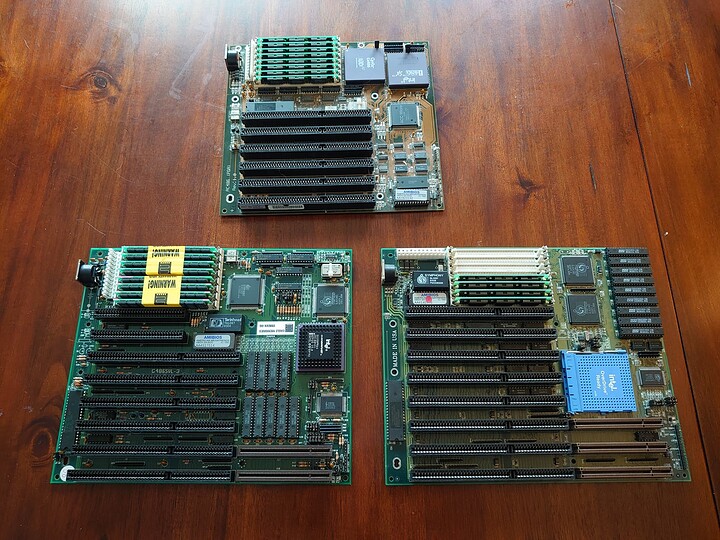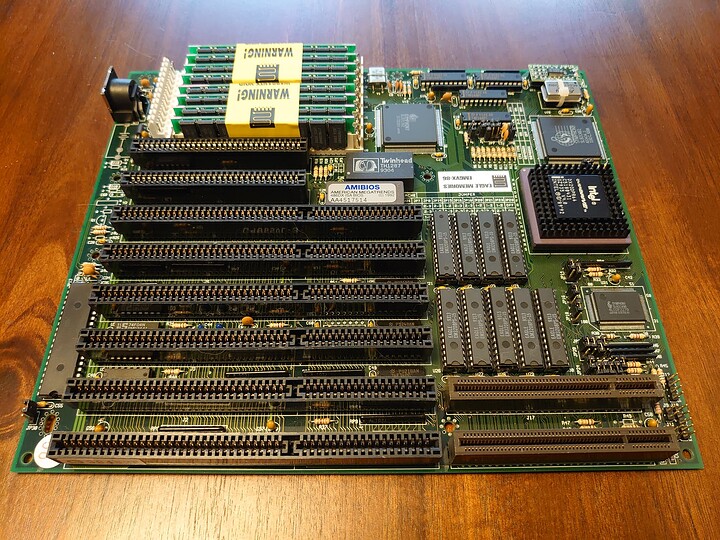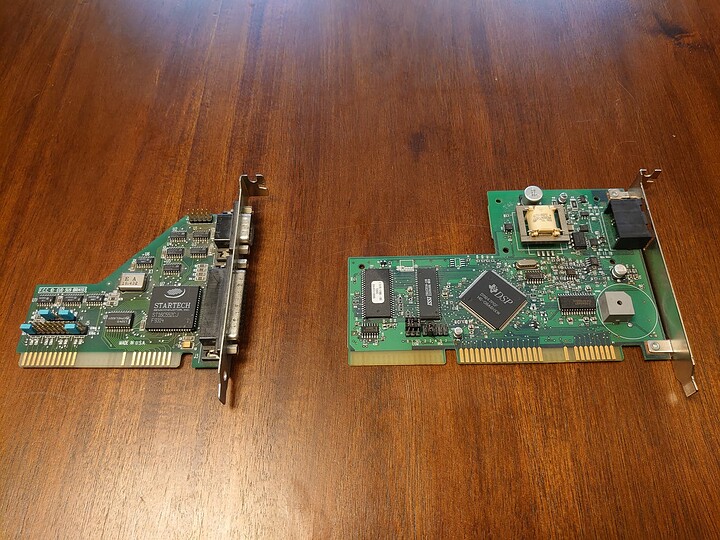Motherboard, CPU, Memory
I’ve got three options here that I know are tested and working, all from a very similar generation of the 486 platform - after the introduction of VLB, but before PCI:
Top: EliteGroup AC486(PGA)
This is obviously a cost-down board marketed to IBM-clone manufacturers. At least that’s my guess.
It has no cache. None. No VLB, either. The ACC chipset is locked at 33MHz bus frequency, so that’s either 33MHz or 66MHz on the CPU only. Thankfully there’s no dead real-time clock batter. Actuallyy, there’s no real-time clock battery at all. There’s a header for a 6V battery though.
Here’s the funny thing though. Because there’s nothing on this board other than a socket and some memory, this thing is literally unstoppable. It may be a glorified '386, but nothing will ever crash the board itself.
Bottom Left: JoinData G486SVL-3 (Branded “Eagle Memories EMGVX-86”)
I picked this up NiB maybe five years ago now, and have used it on-and-off for doing benchtop testing of other ancient hardware I’ve stumbled across.
Really I don’t have much to say about it - two VLB slots, a dead Dallas DS1287 RTC clone, and it supports any 80486SX/DX/DX2/DX4 that was produced. Up to 32MB of DRAM and 256KB of cache populated.
Bottom Right: Young Microsystems VS486F-3VL
This one makes me sad. Socket 3, twice the max DRAM, and four times the max cache of the JoinData board means it puts the other two boards in the ground. But, there seems to be some issue with the socket… I don’t know if there’s a component lead that was trimmed too high, or a surface mount passive, but something underneath there folds two of the CPU pins over whenever the socket closes.
And so, I think I’m putting the good old JoinData G486SVL-3 in this one. I want VLB for the video card which we’ll get to later, and the only other working VLB board runs great but cuts CPU pins in half on extraction.
As for the CPU, the picture gives it away but I’m going with the '486 OverDrive that’s already socketed. I do have a socket puller, but of the options I have -
• Intel OverDrive 486DX2-66
• Intel i486SX-33
• Cyrix Cx486DX2-80
• Cyrix Cx486DX2-66
- that 80MHz Cyrix chip might actually be just a little faster. But, this is more interesting, so it takes the win.




